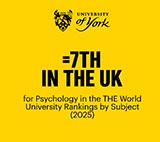
Information for parents
Our research would not be possible without the help and support of parents and their children. We are really grateful to everyone who has helped us in the past, and we hope to meet many more of you as our research projects develop in the future.
If your child’s school has consented to take part in our research, you can find out about procedures, the benefits to your child and how we use our research findings here.
Agreeing to participate
We agree ahead of time with the school’s head teacher the dates we will be visiting, and the head teacher provides consent to our visit for the school. If your child’s school is taking part in the research, you will receive information about the tasks we intend to do a few weeks in advance so you can decide if you want your child to take part; our contact details are included with this information if you have any questions about the visit.
Participation is entirely voluntary and you are free to withdraw your child at any time.
School visits
We see children both individually and as a class during our visits. Our researchers are fully trained and have had enhanced Disclosure and Barring Service checks.
During our school visits, the children take part in lots of varied activities. We work closely with class teachers to ensure that the research takes place at a suitable time and that the children don’t miss any key lessons.
Children get to practise key skills such as mathematics, reading and phonics with well-trained research staff. The activities are fun and they really enjoy them; we give them lots of stickers and praise along the way!
After our visits
After we have visited a school, the datasets are kept strictly confidential in locked filing cabinets. Assessment data is anonymised and kept secure. While we are not able to comment on individual children or schools, we provide regular updates on our findings via our newsletter.
If you would like to receive a copy of our latest newsletter please email numer8ed2-project@york.ac.uk.
Studies in the Department of Psychology
We are also conducting exciting neuroscience-based testing in the Department of Psychology, using EEG (electroencephalography) and eye-tracking to investigate mathematical cognition. The EEG uses sensors to measure electrical activity in the brain. The sensors are contained in a stretchy cap, which is like a swimming cap. Eye tracking involves using cameras to measure eye movements during visual tasks. We can then use eye movement data to measure things such as attention, viewing time, and pathways of visual processing, all of which can give us insights into how participants are processing what they see.
Recording EEG and eye-tracking is a completely non-invasive and painless procedure. EEG and eye-tracking do not do anything to the brain; these methods simply allows us to record naturally occurring electrical signals and eye-movements.
If you are interested in finding out more about any eye-tracking or EEG studies running currently, please email: numer8ed2-project@york.ac.uk.
